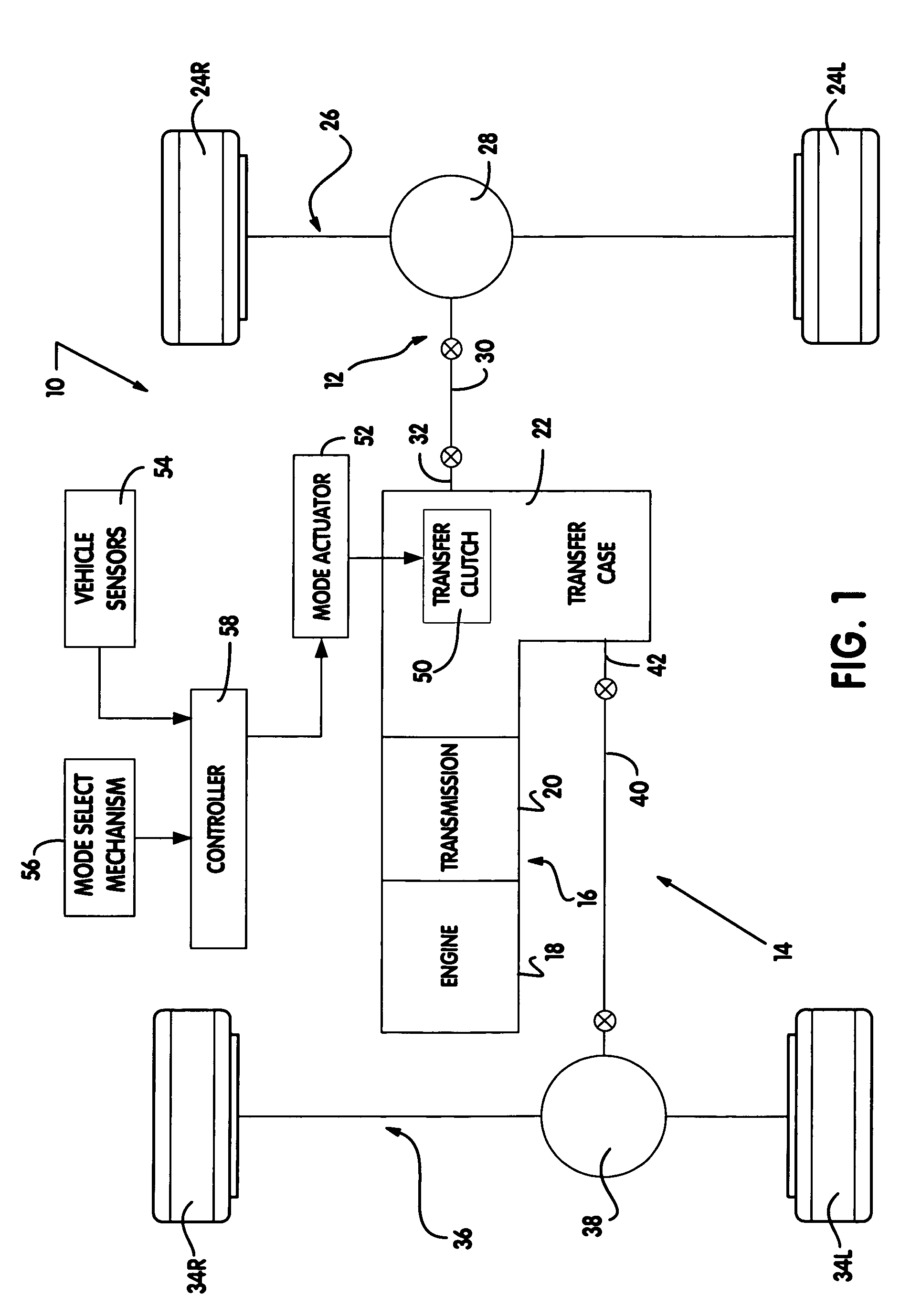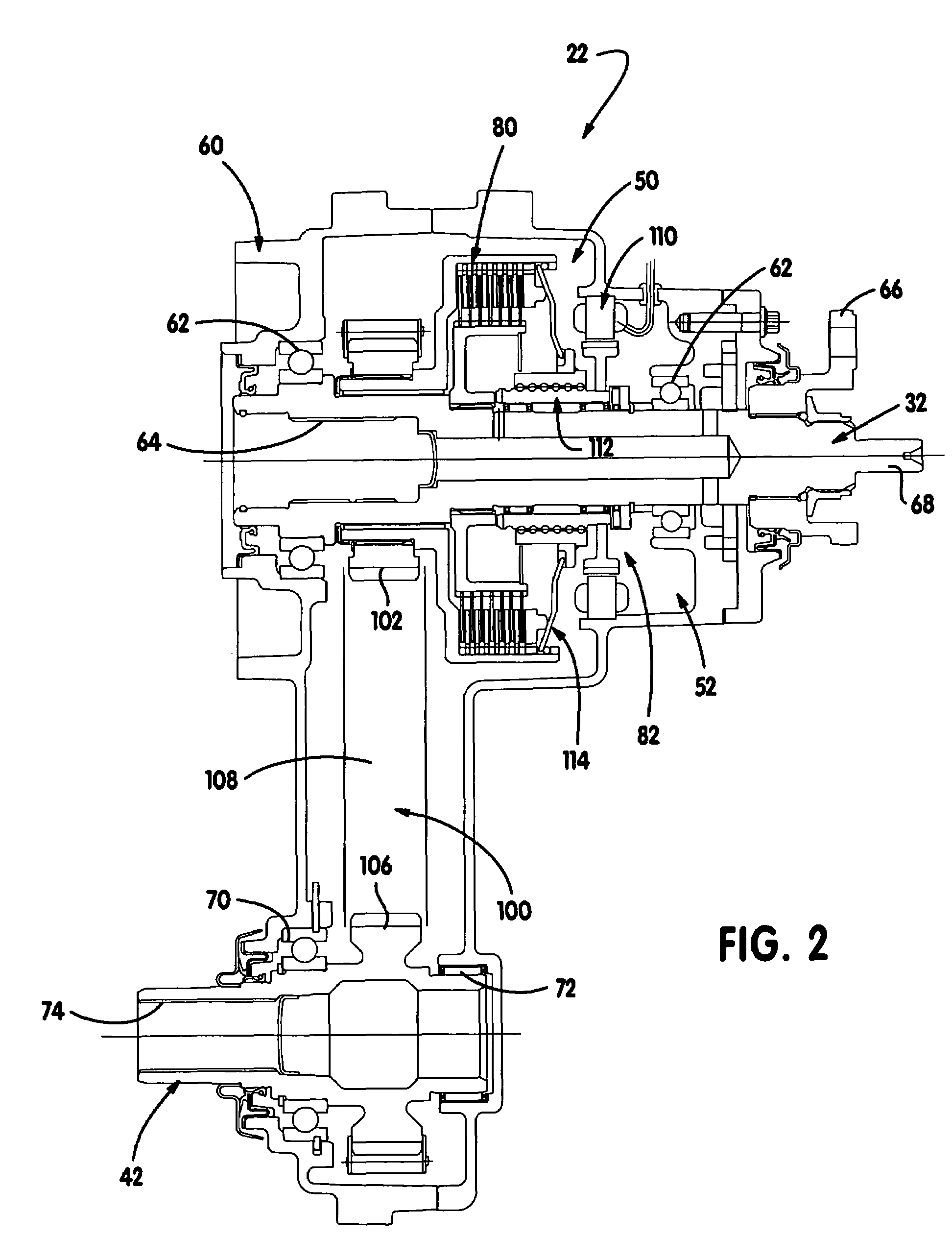Torque vectoring drive mechanism having a power sharing control system
a technology of torque vectoring and control system, which is applied in mechanical actuated clutches, transportation and packaging, gearing, etc., can solve the problem of system cost prohibitive in some four-wheel drive vehicle applications
- Summary
- Abstract
- Description
- Claims
- Application Information
AI Technical Summary
Benefits of technology
Problems solved by technology
Method used
Image
Examples
case 22
[0038]Transfer case 22 is shown in FIG. 2 to include a multi-piece housing 60 from which rear output shaft 32 is rotatably supported by a pair of laterally-spaced bearing assemblies 62. Rear output shaft 32 includes an internally-splined first end segment 64 adapted for connection to the output shaft of transmission 20 and a yoke assembly 66 secured to its second end segment 68 that is adapted for connection to rear propshaft 30. Front output shaft 42 is likewise rotatably supported from housing 60 by a pair of laterally-spaced bearing assemblies 70 and 72 and includes an internally-splined end segment 74 that is adapted for connection to front propshaft 40.
[0039]Transfer clutch 50 is a multi-plate friction clutch assembly 80 and mode actuator 52 is a power-operated clutch actuator assembly 82 which together define a torque transfer mechanism according to a preferred embodiment of the present invention. Friction clutch assembly 80 includes a hub 84 fixed via a spline connection 86 t...
PUM
 Login to View More
Login to View More Abstract
Description
Claims
Application Information
 Login to View More
Login to View More - R&D
- Intellectual Property
- Life Sciences
- Materials
- Tech Scout
- Unparalleled Data Quality
- Higher Quality Content
- 60% Fewer Hallucinations
Browse by: Latest US Patents, China's latest patents, Technical Efficacy Thesaurus, Application Domain, Technology Topic, Popular Technical Reports.
© 2025 PatSnap. All rights reserved.Legal|Privacy policy|Modern Slavery Act Transparency Statement|Sitemap|About US| Contact US: help@patsnap.com



